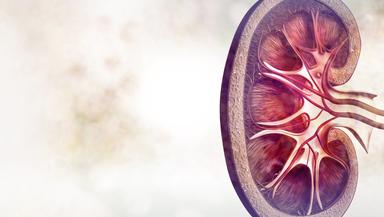Gallstone surgery, also known as cholecystectomy, is used to treat chronic gallbladder issues like gallstones, inflammation, polyps, and others.

- Synopsis
- Introduction
- When Is Gallbladder Removal Necessary?
- Types of Gallbladder Removal Surgery
- Why Choose Gallbladder Removal Surgery?
- Preparation for Gallbladder Removal Surgery
- Gallbladder Removal Surgery Procedure
- Recovery and Aftercare
- Risk and Complications after Gallbladder Removal Surgery
- Why Choose Gleneagles Hospitals for Gallbladder Removal?
Synopsis
Gallbladder removal, also known as cholecystectomy, is a surgical process to treat different gallbladder conditions. This guide explains the process and what you can expect before and after the surgery. With expert gallbladder specialists, Gleneagles Hospitals provides exceptional care for all patients.
Introduction
The gallbladder is a small organ shaped like a pear. It is located just below the liver on the upper right side of the abdomen. It is known to store bile, a digestive fluid produced by the liver. When you eat food, especially fatty foods, the gallbladder contracts and releases bile into the small intestine to help break down and digest fats.
At Gleneagles Hospitals, our gallbladder specialists understand the role of the gallbladder in digestion. While it's not essential for your body to function properly, many people live healthy lives without a gallbladder. The liver just continues to produce bile that flows directly to the small intestine.
When Is Gallbladder Removal Necessary?
There are many reasons why you may need gallbladder removal. These include:
- Gallstones: Can cause severe pain & other complications
- Chronic Cholecystitis: Inflammation of the gallbladder
- Gallbladder Polyps: Larger lumps that might be cancerous
- Gallbladder Cancer: In situations where cancer is detected
- Pancreatitis: Inflammation of the pancreas caused due to gallstones
Types of Gallbladder Removal Surgery
Based on surgical procedures, there are two types of gallbladder stone removal surgery, which are laparoscopic cholecystectomy (keyhole surgery) and open cholecystectomy. The laparoscopic cholecystectomy is more common due to its many benefits. Open cholecystectomy is used in specific cases. Here are some common types of gallbladder removal surgeries:
- Laparoscopic Cholecystectomy: It is a minimally invasive procedure where small incisions are made through which laparoscopic surgical instruments are inserted to remove the gallbladder. It causes less surgical trauma, reduced scarring, and quicker recovery time.
- Open Cholecystectomy: Also known as traditional cholecystectomy, it involves a large incision in the stomach to access or remove the gallbladder. It is necessary in specific cases where there are complications like severe scarring, obesity, or bleeding disorders, and laparoscopic surgery is not feasible.
Your health matters – get expert advice today.
Why Choose Gallbladder Removal Surgery?
Gallbladder removal, or cholecystectomy, is a common procedure for painful gallstones and other complicated and symptomatic gallbladder issues. Gallstone surgery has many benefits, such as reducing complications from gallstones, like jaundice, bloating, abdominal distension, and pain. Here are some common cases in which a gallbladder removal surgery is needed:
- Gallstones: Gallstones can cause recurring abdominal pain, nausea, vomiting, and jaundice. Gallbladder stone removal effectively removes the gallbladder, preventing future complications.
- Gallbladder Inflammation: Gallbladder inflammation, also known as cholecystitis, can cause severe pain.
- Gallbladder Polyps: Large gallbladder polyps risk turning cancerous and require immediate treatment.
- Pancreatitis: Large gallstones can cause inflammation in the pancreas, which can cause complications.
- Poor Gallbladder Motility: A disorder called biliary dyskinesia can cause pain in the upper gastrointestinal tract.
Preparation for Gallbladder Removal Surgery
Thorough preparation before gallbladder removal surgery (cholecystectomy) ensures a smooth gallstone treatment. It also significantly helps patients recover swiftly. Here are some steps that doctors might recommend before gallbladder removal surgery:
- Pre-Surgical Instructions: Consult with your surgeon to discuss your medical history, medications, and any existing conditions so they can assess whether you can benefit from the surgery. They might recommend blood work, an ultrasound, or an MRI to see how your gallbladder functions. You might need to stop blood thinners, NSAIDs (like ibuprofen), and certain supplements as recommended by the doctor. Avoid food or drinks for 6-8 hours before the surgery. Drink plenty of fluids before the fasting period begins.
- Lifestyle Adjustments: Eat a low-fat diet to minimise symptoms before the surgery. Avoid smoking and alcohol not to add any unnecessary complications and help the healing process. Stay active with light exercises but avoid strenuous activities.
- Preparing for Recovery: Since there might be side effects from anaesthesia, arrange for transportation and a reliable companion before the surgery. Prepare essentials like easy-to-digest foods, pain relievers, and comfortable clothing. Set up a cosy recovery area with the items you need at a comfortable reach.
- Mental Preparation: Understand the procedure from your doctor and know what to expect before the surgery to relieve anxiety. Since complete recovery can take a few weeks, you should plan for leaves and arrange for people to take care of chores, housework, and pets in the meantime.

Gallbladder Removal Surgery Procedure
Gallbladder stone surgery, or cholecystectomy, is performed to treat symptoms of chronic gallbladder issues. The surgery is performed using laparoscopic and open methods, depending on the situation.
- Pre-Surgery Preparation: You will be given general anaesthesia to make the process pain-free and easy. You will be positioned on the surgical table on your back, and the surgical area will be clean and sterilised.
- Surgery Procedure: If it is laparoscopic cholecystectomy, then the surgeon will make 3-4 small incisions around the abdomen and remove the gallbladder with the help of a laparoscope and surgical instruments. The incisions are closed with sutures or surgical glue. The recovery time in this case is 1-2 weeks. In open cholecystectomy, a large incision of 4-6 inches will be made in the abdomen. The gallbladder is carefully removed through that open area, and it is put back together with sutures or staples. The typical recovery time takes 4-6 weeks.
- Post-Surgery & Recovery: Most laparoscopic surgeries are outpatient, but open surgeries may require a 2-3 day hospital stay to monitor for complications. Mild pain and bloating are normal, and usually, over-the-counter pain relievers are prescribed to deal with it. Try to have a liquid diet in the beginning and then gradually introduce a soft diet and low-fat foods. Avoid heavy lifting or strenuous activities for a few weeks.
Recovery and Aftercare
Laparoscopic gallbladder stone removal takes about 1-2 weeks to recover, whereas open cholecystectomy takes around 4-6 weeks to heal. Laparoscopic cholecystectomy patients usually get discharged the same day or have an overnight stay in many cases. In open surgery, patients are kept in the hospital for 2-3 days for recovery. Mild pain and bloating are common, and you will be given pain management medicines. You might be recommended to use a pillow to support the abdomen while coughing or sneezing.
You should keep the incision clean and dry to avoid risks of infection. Avoid scrubbing or soaking the area unless the doctor clears it. For the first few days after surgery, have a liquid diet and then gradually introduce soft, low-fat foods. Avoid fatty, greasy, and spicy food as well as dairy, caffeine, and carbonated drinks for as long as possible. Have small but frequent meals to help in digestion.
Avoid lifting heavy objects and strenuous activities. Light walking with assistance is encouraged to prevent blood clots and improve circulation. Wait for at least a week before you start driving.
Risk and Complications after Gallbladder Removal Surgery
While it is generally considered a safe procedure, the surgery carries certain risks and complications. Most people usually have short-term side effects like bloating, diarrhoea, and nausea during recovery. Here are some of the risk factors related to gallstone surgery:
- Bile Duct Injury: This is considered the most serious complication where the bile duct is injured accidentally. It potentially requires further procedures to repair.
- Bile Leakage: Leakage of bile from the surgical site into the abdominal cavity requires additional surgery to manage.
Bleeding: Excessive bleeding during and after the surgery might be a complication, leading to further intervention. - Infection: Wound infection at the incision site is something that happens when the wound site is not kept clean and dry. This potential risk is managed with antibiotics.
- Blood Clots: In the case of high-risk individuals, blood clots in the leg vein can be a possible complication.
- Injury to Nearby Organs: Although it is rare, there is a small risk of accidentally damaging the liver, stomach, or small intestine during the surgery.
Why Choose Gleneagles Hospitals for Gallbladder Removal?
Gleneagles Hospitals is a trusted name in healthcare that has reached heights of excellence in gallbladder stone removal without surgery, as well as advanced gallbladder surgeries. Our dedicated team of surgeons and support staff provides exceptional care. We specialise in minimally invasive surgeries with minimal scarring and fewer post-op complications. Here is why Gleneagles Hospitals is considered the leading hospital for gallbladder stone surgery:
- Expert Surgeons: Our highly skilled surgeons specialise in advanced laparoscopic and traditional open surgeries.
- State-of-the-Art Facilities: The hospital has advanced diagnostic labs for precision.
- Minimally Invasive Techniques: Our minimally invasive techniques reduce hospital stay and minimise post-op complications.
- World-Class Infrastructure: We are equipped with modern operation theatres and private recovery units for complete patient comfort.
- High Success Rate: We have a remarkable success rate in ensuring patient safety and providing long-term benefits.
Frequently Asked Questions
This surgery is typically popular for gallstone treatment. Other than this, gallbladder stones, gallbladder inflammation, gallbladder polyps, and other chronic conditions.
There are two types of major gallstone surgery, which are laparoscopic cholecystectomy (keyhole surgery) and open cholecystectomy.
In laparoscopic gallbladder stone surgery, it takes about 1-2 weeks to recover and in open gallbladder surgery, it takes 4-6 weeks to recover fully.
Some common short-term complications of gallbladder stone surgery are bloating, diarrhoea, and nausea.
















